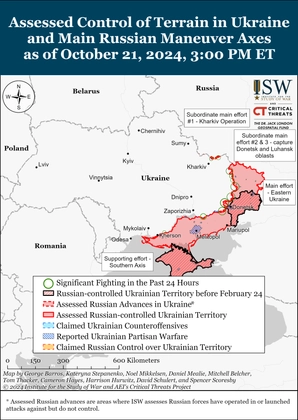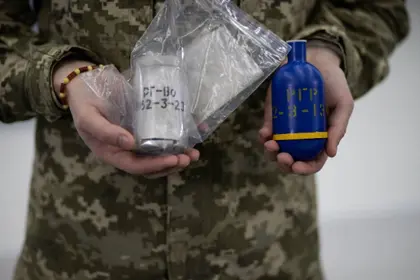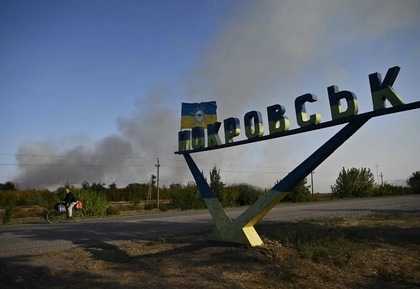One-quarter of all the Russian chemical weapons employed during the Kremlin’s two-year full-scale war in Ukraine were launched during the month of February 2024, an official Ukrainian military statement said.
Moscow’s troops have hit Ukrainian forces a total of 1,068 times with Geneva-banned tear gas since invading Ukraine, and 250 deployments of the irritant took place from Feb. 1-29 this year, a Monday statement from Ukraine’s Army General Staff said.
JOIN US ON TELEGRAM
Follow our coverage of the war on the @Kyivpost_official.
The Ukrainian army statement said that practically all of the February attacks – 244 – were delivered by grenade. Use of CS gas in war is banned by paragraph 5 of Article 1 of the Geneva Chemical Weapons Convention, the statement said.
The effects of tear gas or CS gas are normally temporary and can include blindness, difficulty breathing, coughing, vomiting, dizziness, disorientation and burning in the mouth and nostrils. Long-term exposure or allergic reaction can cause permanent scarring or death.
General Oleksandr Tarnavsky, senior officer in Ukraine’s Joint Forces Tavria troop command, on Sunday (March 3) said Kyiv troops in the southeastern Zaporizhzhia sector were hit nine times by Russian drones carrying CS grenades over a 24-hour period.
Recent use of chemical grenades against Kyiv’s troops was confirmed by the Russian state-run television channel in a late February report airing drone video showing drops of K-51 chemical grenades on a Ukrainian infantry holding a dugout position.

ISW Russian Offensive Campaign Assessment, October, 22, 2024
EMBED: https://t.me/Euromaydannews/9823
Ukrainian troops have widely confirmed a Russian tactic of dropping tear gas grenades on fortifications with the objective of smoking defenders out of bunkers, and then attacking them with kamikaze drones once they come to the surface.
A Ukrainian officer blogger identifying himself as Lieutenant Alex in a Jan. 30 post warned fellow soldiers that even if jamming equipment was present to prevent a precise chemical grenade drop by the drone, toxic smoke would naturally sink into underground positions and flush out defenders. He said he was deployed to the southcentral Robotyne sector.
An early, possible indicator of Russian chemical weapon use against Ukrainian troops came on Nov. 15, when the independent military information platform DeepState reported Moscow’s forces had hit defenders in the northeastern Sviatisky and southeastern Bakhmut sectors with an unidentified weapon deploying the chloropicrin, a chemical widely used in tear gas weapons during World War I. The report was widely repeated in Ukrainian media but never independently confirmed.
According to Ukrainian army briefing materials published on Jan. 25, Russian forces at the start of 2024 expanded use of toxic gas grenades dropped by hobby drones, almost always quadcopters, and started using a new grenade designed to pump out gas at a pre-set altitude above the ground.
Andrii Rudnyk, a spokesman for the Central Scientific Research Institute of Armament and Military Equipment of the Armed Forces of Ukraine, said at a press conference that army researchers analyzing the newly fielded Russian air-dropped grenades found the chemical chloroacetophenone, a compound toxic enough to kill a healthy adult in five minutes in an enclosed space.
The grenades captured by Ukrainian forces were manufactured in Russia in 2023, meaning Moscow’s violation of the Geneva Chemical Weapons Convention extends beyond the use of the banned weapon, but its illegal production as well, Rudnyk said.
Kyiv Post was not able to confirm the Ukrainian army's claim that Russian troops are using a weapon containing a lethal poison gas, rather than a debilitating one like CS.
Kyiv Post and other independent news organizations have observed evidence of sporadic Russian use of tear gas against Ukrainian positions in past months, almost always by drones carrying a tear gas grenade.
As a tactical practice, Ukrainian drone pilots much prefer dropping a fragmentation grenade on a Russian soldier because fragmentation injuries are permanent and at times lethal.
Russia has accused Ukraine repeatedly of using chemical weapons. On Tuesday, in comments by the Kremlin-run media platform Izvestiya Kirill Lysogorskiy, Deputy Head of the Ministry of Industry and Trade of the Russian Federation, was quoted as stating Ukrainian forces target Russian troops and civilians in occupied territories with chemical weapons.
According to the Izvestiya report, Kyiv forces are using a chemical compound called “BZ” that attacks nervous systems causing hallucinations, fear, weakness, blindness and deafness in a victim. Among locations hit with Ukrainian chemical attacks, the report said, was near the village Rabotyne. Kyiv Post was not able to confirm the Kremlin claims.
An international convention signed in Geneva on June 17, 1925 committed signatories never to use chemical weapons in war, never to produce chemical weapons, and to destroy existing stockpiles. Both Russia and Ukraine are signatories.
You can also highlight the text and press Ctrl + Enter






